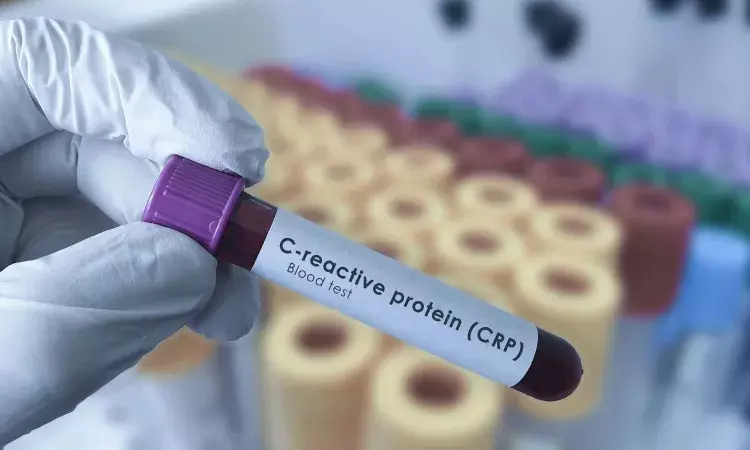- Home
- Medical news & Guidelines
- Anesthesiology
- Cardiology and CTVS
- Critical Care
- Dentistry
- Dermatology
- Diabetes and Endocrinology
- ENT
- Gastroenterology
- Medicine
- Nephrology
- Neurology
- Obstretics-Gynaecology
- Oncology
- Ophthalmology
- Orthopaedics
- Pediatrics-Neonatology
- Psychiatry
- Pulmonology
- Radiology
- Surgery
- Urology
- Laboratory Medicine
- Diet
- Nursing
- Paramedical
- Physiotherapy
- Health news
- Fact Check
- Bone Health Fact Check
- Brain Health Fact Check
- Cancer Related Fact Check
- Child Care Fact Check
- Dental and oral health fact check
- Diabetes and metabolic health fact check
- Diet and Nutrition Fact Check
- Eye and ENT Care Fact Check
- Fitness fact check
- Gut health fact check
- Heart health fact check
- Kidney health fact check
- Medical education fact check
- Men's health fact check
- Respiratory fact check
- Skin and hair care fact check
- Vaccine and Immunization fact check
- Women's health fact check
- AYUSH
- State News
- Andaman and Nicobar Islands
- Andhra Pradesh
- Arunachal Pradesh
- Assam
- Bihar
- Chandigarh
- Chattisgarh
- Dadra and Nagar Haveli
- Daman and Diu
- Delhi
- Goa
- Gujarat
- Haryana
- Himachal Pradesh
- Jammu & Kashmir
- Jharkhand
- Karnataka
- Kerala
- Ladakh
- Lakshadweep
- Madhya Pradesh
- Maharashtra
- Manipur
- Meghalaya
- Mizoram
- Nagaland
- Odisha
- Puducherry
- Punjab
- Rajasthan
- Sikkim
- Tamil Nadu
- Telangana
- Tripura
- Uttar Pradesh
- Uttrakhand
- West Bengal
- Medical Education
- Industry
CRP to albumin ratio indicates disease activity in juvenile idiopathic arthritis patients: Study

A new study by Giulia Di Donato and team found that in individuals with juvenile idiopathic arthritis (JIA), the neutrophil to lymphocyte ratio (NLR) and the C reactive protein to albumin ratio (CAR) may provide evidence of ongoing disease activity. The findings of this study were published in the journal of BMC Rheumatology.
The most common chronic rheumatic condition in children, JIA is a major contributor to both short- and long-term impairment as well as a lower quality of life. The last 20 years have seen the introduction of combination therapy plans and targeted medicines due to increased understanding of JIA etiology. New derivative indicators have emerged as promising biomarkers of systemic inflammation and disease activity in individuals with autoimmune disorders, including rheumatoid arthritis (RA), according to recent scientific research.
Studies on adult RA patients has demonstrated a favorable relationship between disease activity, likelihood of flare, and CRP to CAR. Additionally, number of studies have raised the possibility that NLR and the platelet to lymphocyte ratio (PLR) may serve as supplementary diagnostic tools and inflammatory indicators in RA and other rheumatic disorders. The primary goal of this study was to look at the function of CAR, PLR, and NLR as possible disease activity markers in patients with non-systemic JIA (nsJIA). The second goal was to longitudinally explore the link between CAR, PLR, and NLR with the probability of flare or chronic disease activity over an 18-month period.
A total of 130 nsJIA patients, with 74 patients undergoing active disease and 56 patients undergoing inactive disease, based on Wallace criteria and 62 healthy controls participated in this prospective, cross-sectional study. During follow-up, demographic, clinical, and laboratory data were gathered at baseline (T0), as well as at three, six, twelve, and eighteen months (T1, T2, and T4). The Juvenile Arthritis Disease Activity Score was used to assess disease activity (JADAS-27).
At baseline, there were no differences in NLR or PLR, although CRP and CAR were greater in patients than in controls. But, among the JIA patients, there was no positive link found between CAR, NLR, PLR, and JADAS-27. A generalized estimating equation (GEE) model was implemented to all patients with or without active illness, to better evaluate the function of CAR, NLR, and PLR as indicators of disease activity. This study showed that baseline CAR and NLR levels were indicative of increased disease activity risk at 6-month follow-up (p<0.001). Overall, CAR to NLR value might be strengthened by their combined usage and the study of their trend during follow-up, since increasing CAR levels over time could indicate a disease flare in a short period.
Reference:
Di Donato, G., Attanasi, M., Mariarita d’ Angelo, D., La Bella, S., Di Ludovico, A., Chiarelli, F., & Breda, L. (2024). Associations of C reactive protein to albumin ratio, neutrophil to lymphocyte ratio, platelet to lymphocyte ratio with disease activity in patients with juvenile idiopathic arthritis. In BMC Rheumatology (Vol. 8, Issue 1). Springer Science and Business Media LLC. https://doi.org/10.1186/s41927-024-00390-x
Neuroscience Masters graduate
Jacinthlyn Sylvia, a Neuroscience Master's graduate from Chennai has worked extensively in deciphering the neurobiology of cognition and motor control in aging. She also has spread-out exposure to Neurosurgery from her Bachelor’s. She is currently involved in active Neuro-Oncology research. She is an upcoming neuroscientist with a fiery passion for writing. Her news cover at Medical Dialogues feature recent discoveries and updates from the healthcare and biomedical research fields. She can be reached at editorial@medicaldialogues.in
Dr Kamal Kant Kohli-MBBS, DTCD- a chest specialist with more than 30 years of practice and a flair for writing clinical articles, Dr Kamal Kant Kohli joined Medical Dialogues as a Chief Editor of Medical News. Besides writing articles, as an editor, he proofreads and verifies all the medical content published on Medical Dialogues including those coming from journals, studies,medical conferences,guidelines etc. Email: drkohli@medicaldialogues.in. Contact no. 011-43720751


